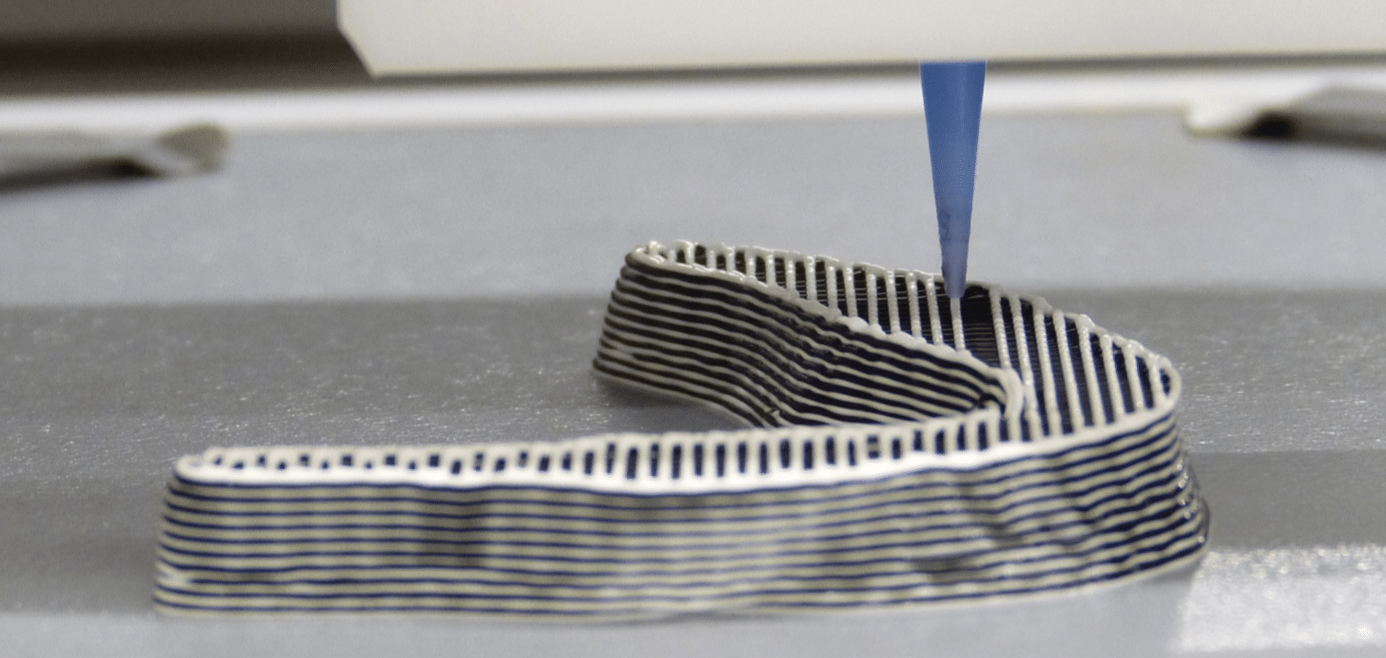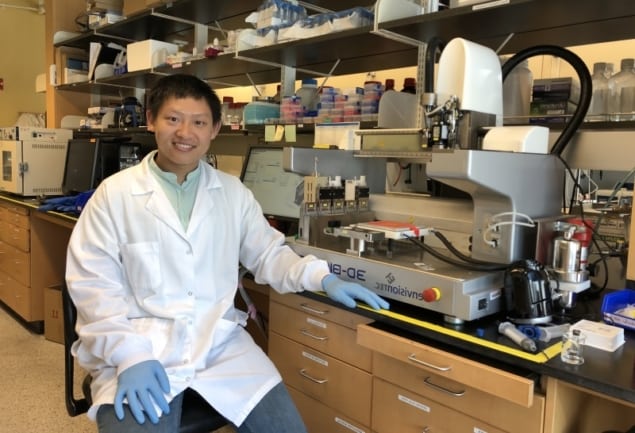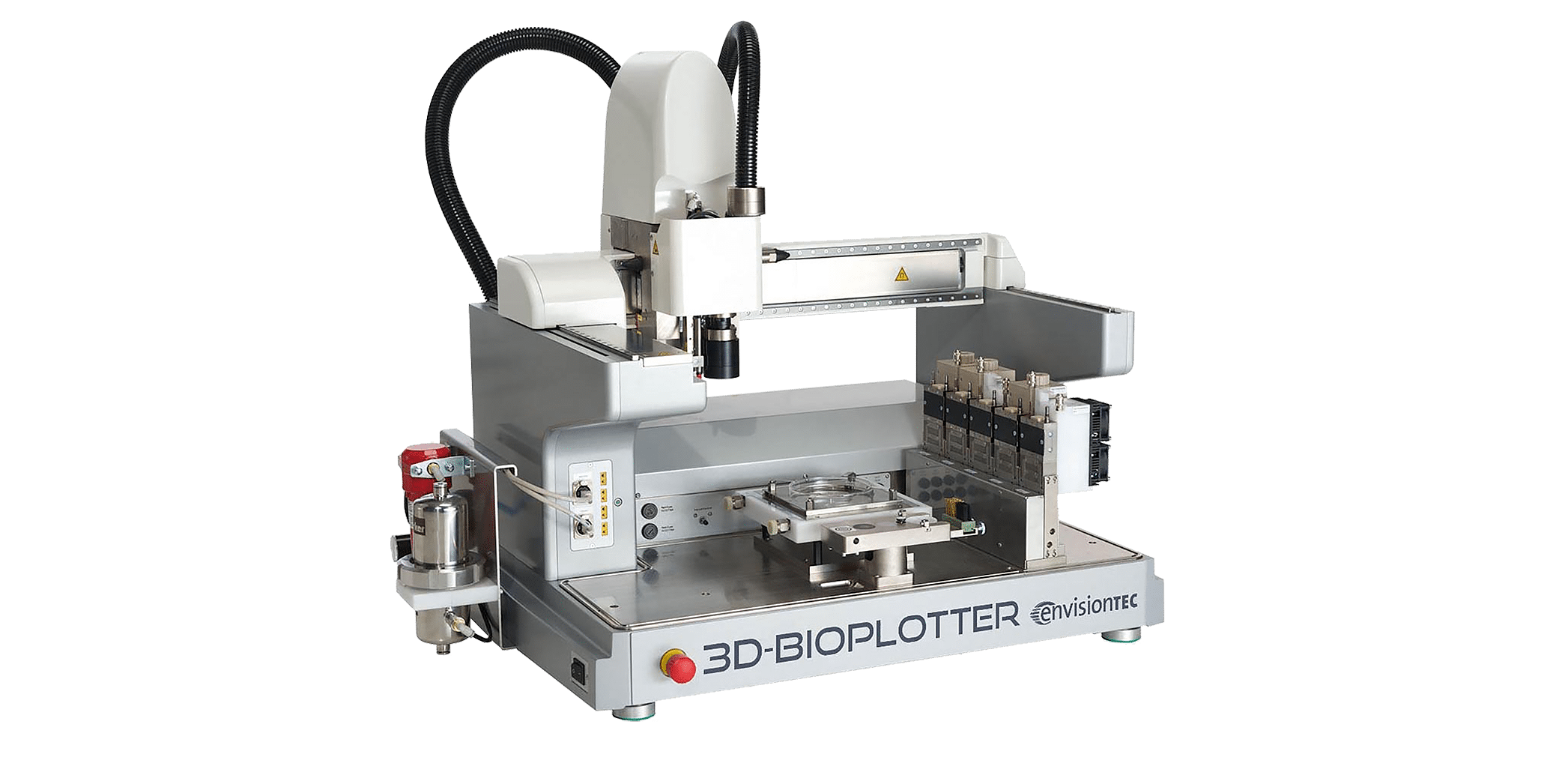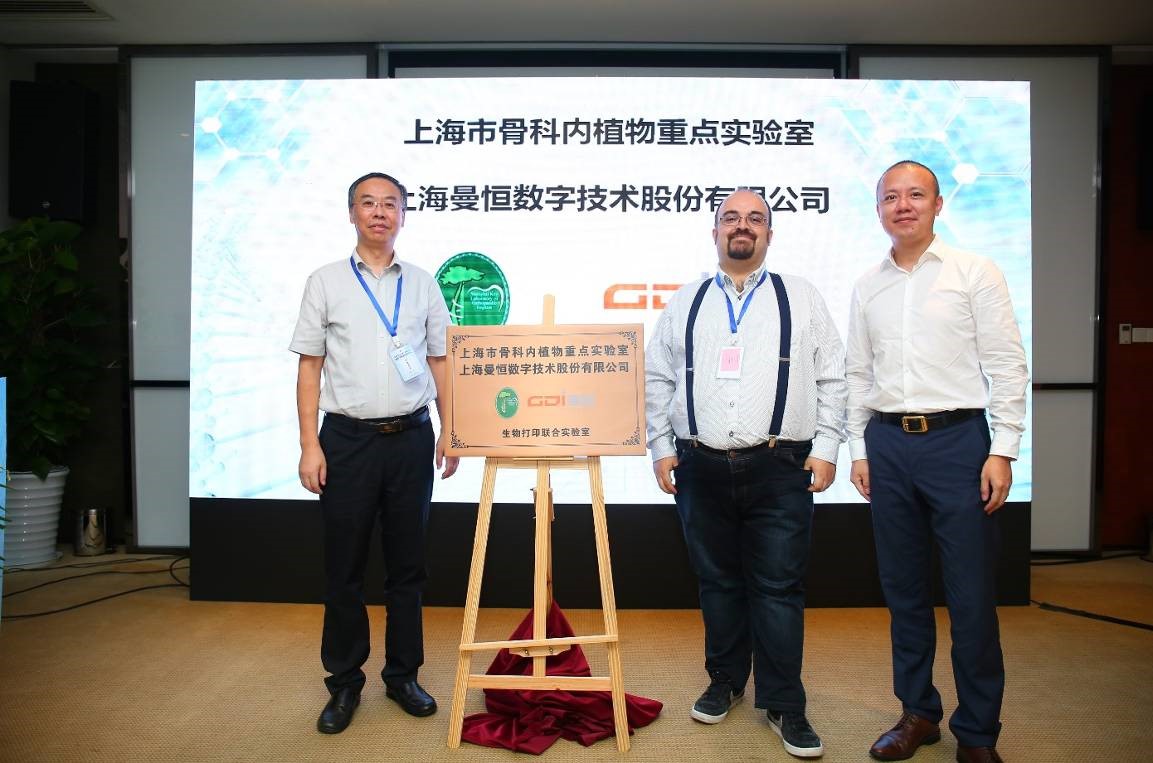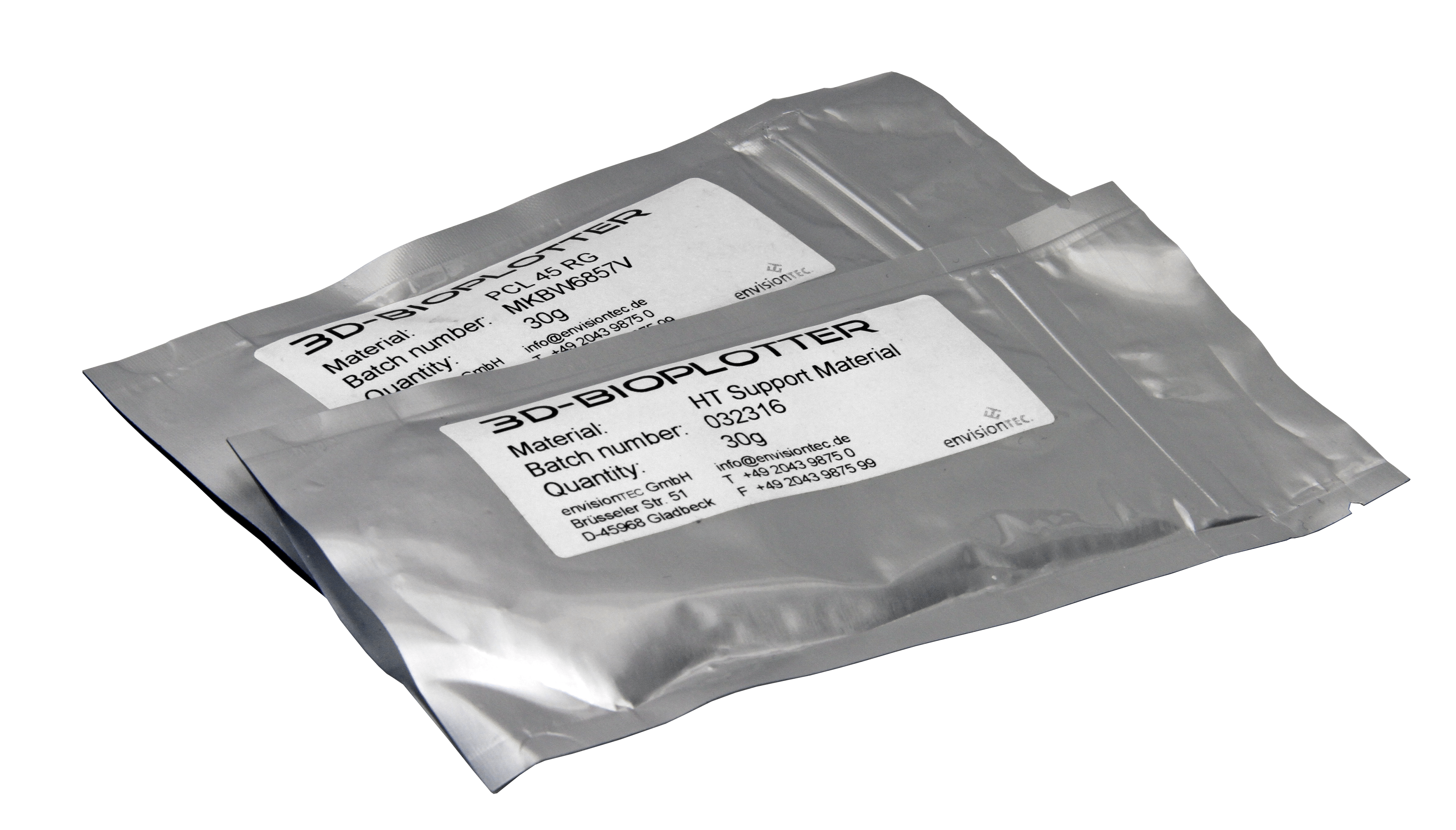Bioprinting
Bioprinting Materials: From Research to Clinical Use
While EnvisionTEC has been selling the world’s leading bioprinter since its founding in 2002, the first official 3D-Bioplotter materials weren’t launched until 2017.
The 3D-Bioplotter is EnvisionTEC’s only open-source materials printer ― a feature designed to give medical researchers and manufacturers the flexibility to develop their own materials for unique research or a specific patient. For more than 15 years, our users have been doing just that: printing silicones, thermoplastics, ceramic and metal pastes, hydrogels and more, often alongside living cells.
As the 3D-Bioplotter has become ever more popular, however, with more than 200 citations in peer-reviewed journals, there has been increasing demand for standard printing materials. That’s been especially true for routine functions, such as printing supports for tissue engineering applications or structures for soft implants.
Today, EnvisionTEC offers bioprinting materials that are biocompatible and cell-friendly for a variety of those functions. In all, three grades of materials are now offered, in order of purity:
• Technical Grade (TG)
• Research Grade (RG)
• Medical Grade (MG)
Several of EnvisionTEC’s standard bioprinting materials also come with low-temperature (LT) or high-temperature (HT) designations, to meet different printing needs. For example, EnvisionTEC offers LT and HT versions of its Support RG material. This research-grade material can be used to create sacrificial supports that are dissolved in distilled water after the support is no longer needed. The LT version is cellulose-based and has a processing temperature of 23°C or 73°F, while the HT version is sugar-based and can be processed at 150°C or 302°F.
As the world leader in bioprinting solutions, EnvisionTEC continues to develop bioprinting materials with its global partners as the field of regenerative medicine evolves and we see our line of bioprinting materials expanding in the coming years as research moves into clinical trials and manufacturing production.
Silicone 60A UV MG is a biocompatible, bio-inert, non-biodegradable liquid silicone rubber that is cured with a UV light and delivers a Shore A hardness of 60. A transparent material, it can also be mixed with pigments. Approved only for short-term use in the body (29 days or less), it is suitable for microfluidics, wound dressings, bio-sensor housings, and prototyping.
![]()
This very versatile material can be used for numerous demo applications: from trying out new shapes and patterns using a cheap material; through making technical parts (e.g. gaskets); to medical device casings
![]()
Medical grade Polycaprolactone (PCL) is a biodegradable thermoplastic polyester that is processed at high temperatures. It is suitable for both short-term and long-term use in the body (longer than 29 days) and ideal for applications such as bone regeneration, cartilage regeneration, drug release and hybrid scaffolds.
![]()
Medical grade Polycaprolactone (PCL) is a biodegradable thermoplastic polyester that is processed at high temperatures. It is suitable for both short-term and long-term use in the body (longer than 29 days) and ideal for applications such as bone regeneration, cartilage regeneration, drug release and hybrid scaffolds.
![]()
Polycaprolactone (PCL) is one of the most versatile thermoplastic materials for Tissue Engineering Applications. With little thermal degradation, it is an excellent material for large, time-consuming parts.
![]()
This sugar derivative can easily be processed as a melt in prolonged jobs with no measurable degradation. The material is biocompatible and cell friendly, ensuring that residue material does not negatively affect the final object’s biological properties.
![]()
LT Support RG can easily be processed as a hydrogel in short to medium long jobs. The material is biocompatible and cell friendly, ensuring that residue materials do not negatively affect the final object's biological properties.
![]()







